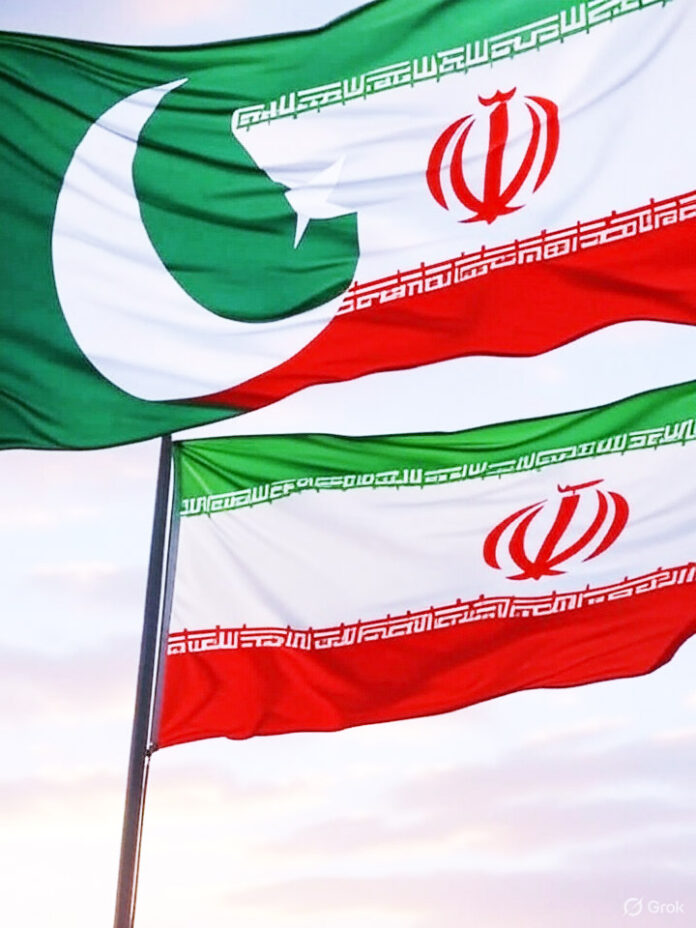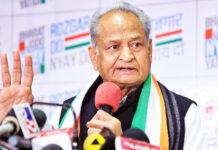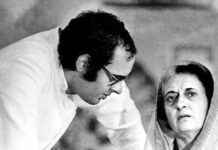Pakistan’s contribution to Iran’s nuclearization, done mainly by A.Q. Khan’s network, delivered key technology, with controversy concerning official involvement.
NEW DELHI: Israel’s pursuit to thwart Islamic nuclear threats, especially from Pakistan and Iran, revolves around its Begin Doctrine of pre-emptive attacks to prevent Islamic extremist forces from gaining nuclear capability. On 13 June 2025, Israel carried out a wave of missile attacks against Iran’s nuclear infrastructure, eliminating key targets such as top nuclear experts Mohsen Fakhrizadeh and Ali Rezaei, and IRGC commander Hossein Salami. The daring operation was designed to devastate Iran’s nuclear program.
Israel, wary of the “Islamic Bomb,” allied with India in early 1980s to design an air strike on Kahuta. Israeli F-16s and F-15s were to refuel in Indian Air Force Bases and fly behind the Himalayas to evade radar, duplicating Operation Opera against Iraq’s Osirak reactor. But India’s Prime Minister at the time, Morarji Desai, denied refuelling, tipped off Pakistan and foiled the plot. Morarji-bhai’s move enabled Pakistan to keep going; RAW operations, for gaining access to Kahuta plans, were also refused, affecting India’s intelligence network. Morarji-bhai was awarded the Nishan-e-Pakistan, the country’s highest civilian honour.
The quest for nuclear weapons among Islamic nations has been a cause of global concern for many years, especially in the context of regional stability and international security. Pakistan and Iran, two of the most geopolitically influential countries in the world, have been the leaders of this quest in many cases, often couched within the discourse of the “Islamic Nuclear Bomb.”
PAKISTAN’S NUCLEARISATION
The Pakistani nuclear program was initiated in the 1970s, with Dr Abdul Qadeer Khan playing a leading role in creating uranium enrichment. The involvement of the United States in nuclearisation of Pakistan can be traced back to the 1950s when technical training and nuclear technology were transferred under President Eisenhower’s “Atoms for Peace” initiative. The US and Pakistan in 1955 signed an agreement for peaceful and industrial purposes for nuclear energy, including a $350,000 pool-type reactor. The US gave the Pakistan Atomic Research Reactor-I (PARR-I) by 1965 under an arrangement with the Pakistan Atomic Energy Commission (PAEC) and Argonne National Laboratory. The initial collaboration gave Pakistan its nuclear capability, with the US providing Pakistan’s inaugural research reactor and fuel.
In the 1980s, geopolitics took a turn, with the Soviet Union’s invasion of Afghanistan in 1979 making Pakistan an important ally of the US. The US gave Pakistan a $3.2 billion aid package between 1979 and 1985, half in cash and half as high-tech weapons, to aid CIA operations illicitly smuggling weapons to Afghan Mujahidin. Presidents Reagan and Bush certified annually between 1985 and 1990 that Pakistan was not constructing nuclear weapons, allowing continued aid in the face of evidence to the contrary, according to historical records. This time witnessed the US closing an eye to Pakistan’s nuclear program, putting strategic partnership ahead of non-proliferation issues.
The strategic interests of the US in Pakistan are two-pronged, based on its geopolitical position as a major South Asian player bordering India, China, and Afghanistan. Pakistan has been a strategic ally in US foreign policy, ceding own sovereignty while acting as a logistical base for US activity in Afghanistan and as a location for hosting U.S. drone attacks and military action against Al-Qaeda and the Taliban.
Rich Barlow, a CIA operative and an expert on Weapons of Mass Destruction (WMD), revealed U.S. complicity in supporting Pakistan’s nuclear program, breaching non-proliferation agreements. He found that Pakistan was procuring nuclear technology with U.S. assistance, such as 40 F-16 aircraft sold during the mid-80s, all of which were fitted for nuclear delivery, although this was denied. Barlow further reported that Pakistan’s nuclear plants, such as Khan Research Laboratories, were equipped with parts from America and Europe, traced through CIA photographs, blueprints, and enriched uranium traces. Barlow’s expose, however, resulted in his dismissal from the CIA in 1989. The cover-up points to the scandal over the CIA’s involvement. He lodged a case for compensation for millions and restoration of his pension.
Since 2001, the US has donated close to $100 million, which has included helicopters, night-vision goggles, equipment for detecting nuclear weapons, and financing for a nuclear security training facility, fencing, intrusion alarms, and identification systems. Nonetheless, tensions continued, with Pakistan rejecting US-offered Permissive Action Link (PAL) technology but suspected of having developed one of its own, and the US raising concerns regarding the safety of Pakistani nuclear installations since 2004. According to a 2009 cable by Ambassador Anne W. Patterson and reports such as “Securing the Bomb 2010” by the Belfer Centre, which found Pakistan’s stockpile to be under the most threat from extremists.
IRAN’S NUCLEARISATION
Iran’s nuclear drive began in the 1950s with U.S. encouragement under the Atoms for Peace initiative, and it grew in the 1970s with power reactor plans. Put on hold after the 1979 Iranian Islamic Revolution, it was taken up secretly in the 1980s Iran-Iraq War as a means of deterrence against Iraq. In the 1990s, Iran sought an entire nuclear fuel cycle, buying centrifuge technology via clandestine networks, including Pakistan and North Korea.
Pakistan was also a key to Iran’s nuclear program via A.Q. Khan’s proliferation network. The Carnegie Endowment’s timeline explains that from 1989 to 1995, Iran received more than 2000 parts and sub-assemblies for P-1 and P-2 centrifuges, and Iran paid around $3 million for high-tech P-2 components in 1994-95. IAEA verified in 2003 that Iran’s Natanz plant used P-1 blueprints acquired from a “foreign intermediary,” who was Khan Abdul Qadeer Khan.
Khan admitted in 2004 alleging authorization by military leaders such as Aslam Beg, implying military involvement. The Arms Control Association mentions a 1986 agreement on nuclear cooperation, signed on Zia-ul-Haq’s visit to Iran, for peaceful nuclear energy, including training beginning in 1988 and help in 1989 Turning a Blind Eye Again Arms Control Association. These deliveries were made using sea routes and involved middlemen such as Heinz Mebus and Gotthard Lerch, with shell companies in Dubai being involved.
Allegations by Khan and reports suggest the involvement of Pakistan military officials, with the 1986 accord in Pakistan giving an indication of official collaboration for peaceful nuclear purposes. Alarms, like US Sen. John Glenn’s 1987 addresses, pointed towards Pakistani/Iranian nuclear collaboration fuelling the controversy US Turning a Blind Eye Again Arms Control Association.
Iran’s program, the IAEA found non-compliant, enriches uranium to 60% purity, whereas Pakistan’s stockpile, more than 170 warheads including tactical and strategic weapons, has security implications due to instability of the country. Pakistan’s contribution to Iran’s nuclearization, done mainly by A.Q. Khan’s network, delivered key technology, with controversy concerning official involvement. The “Islamic Nuclear Bomb” programs threaten world peace, and international initiative is needed to secure stability and non-proliferation.
* Manan Bhatt is a distinguished veteran of the Indian Navy, a published author, and a strategic affairs expert. The views expressed are his own. Follow his insights on X: @mananbhattnavy.








